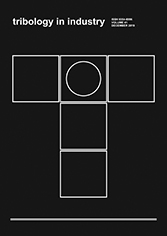Volume 43, No 3, 2021, Pages 349-362
Effect of Dilution on Microstructure and Slurry Abrasive Wear Behaviour of Ni-Cr-Mo-W Coating on 304 Stainless Steel Deposited by Synergic Pulsed Gas Metal Arc Welding
Authors:
A.P. Thummar ![]()
![]() ,
S.P. Wanare
,
S.P. Wanare ![]() ,
V.D. Kalyankar
,
V.D. Kalyankar ![]()
Received: 14 October 2020
Revised: 23 November 2020
Accepted: 15 January 2021
Published: 15 September 2021
Abstract:
The paper aims to avoid premature failure of slide valve, flapper valve and slurry backflush system for fluid catalytic cracking unit due to slurry abrasive wear by depositing Ni-Cr-Mo-W alloy on 304 austenitic stainless steel using synergic pulsed gas metal arc welding. An average coating thickness was obtained in the range of 2.41 mm to 2.78 mm and dilution level varied from 17% to 26.74%. The microstructure revealed that hypoeutectic Ni-FCC dendrites and interdendritic region with MC, M23C6 and M6C carbides were present. The formation of carbides was directly related to dilution level of the coating, since dilution level influenced the proportional amount of carbon and carbide forming alloying elements. Slurry abrasive wear resistance initially increased with an increase in dilution level up to 23.88% of dilution, later on it started to decrease due to reduction in solid solution alloying elements and carbide fraction. Slurry abrasive wear resistance of the coated surface was found up to 3.5 times higher than that of the substrate. The mechanism of abrasive wear under the operation of microcuttings, pits formation and ploughing with a little plastic deformation was witnessed on the worn-out surfaces.
Keywords:
Fluid catalytic cracking unit, Pulsed gas metal arc welding, Coating, Ni-Cr-Mo-W alloy, AISI 304 stainless steel, Dilution, Microstructure, Slurry abrasive wear





